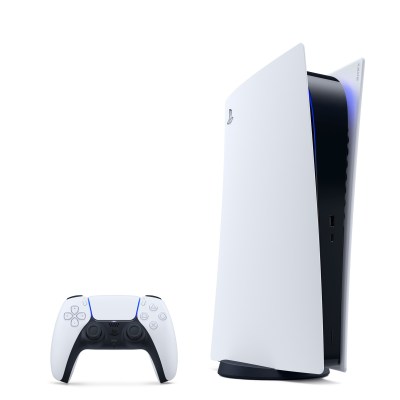It’s easy to forget because if how hard it is to actually buy one, but the PlayStation 5 is finally here. With it comes Sony’s hopes to not only further the legacy of the PS4 but surpass the success of arguably one of the most beloved consoles of the last 20 years.
While few consoles have written the final word on their legacies so early in their lifecycles, it’s rare that a console gets to make a successful second impression after a bad launch. A console’s debut not only sets the tone for the rest of its run, but it tells you whether or not it’s worth actually investing in an expensive new platform.
Since we were lucky enough to receive a PlayStation 5 from Sony, we’re going to help you answer that question by breaking down nearly every facet of the PS5. Is the next-gen console a worthy addition to the PlayStation family or a misguided attempt to recapture former greatness in the face of a rapidly changing industry?
PlayStation 5 Specs
Here’s a quick overview of the PS5’s specs and how they compare to the Xbox Series X:
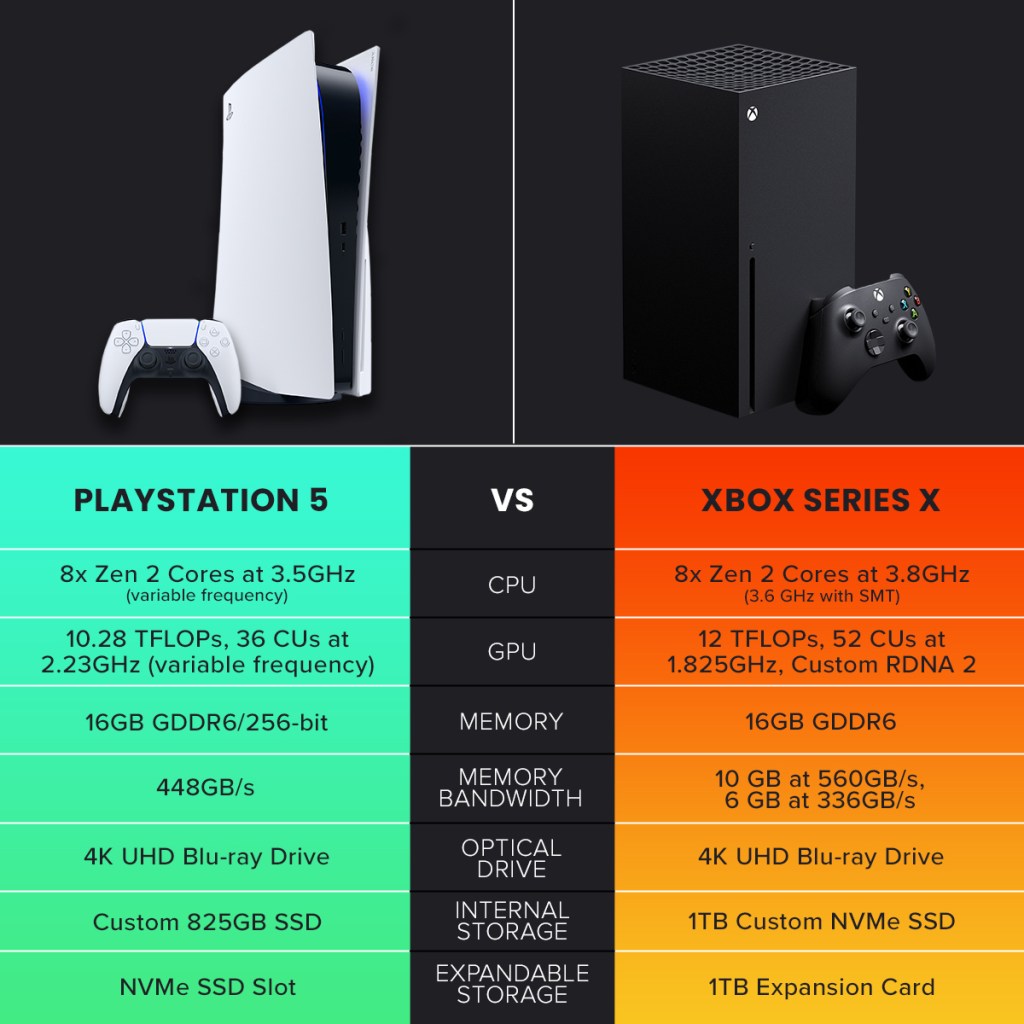
If forced to compare the two consoles from a raw power perspective (which is difficult to do this early in the game), I’d still stick with the conclusion that I arrived at back in March: the Xbox Series X has a slight advantage on paper due to its marginally better GPU and CPU. However, the PS5 could end up becoming the more advanced console due largely to the potential of its custom NVMe SSD.
Taken on its own merits, the PS5 is a remarkably powerful game console. It’s leagues ahead of the PS4 Pro in terms of its GPU and CPU, but the big story here is the advantages offered by the console’s SSD and RAM. Gaming technology as a whole has been sidetracked the last couple of years due to the lack of a standardized SSD in last-gen consoles as well as their subpar memory. If nothing else, the PS5’s technology will result in drastic quality of life improvements that will be immediately apparent in next-gen games.
While the PS5’s specs can’t quite compete with the latest and greatest GPUs offered by NVIDIA and AMD, that shouldn’t really be too much of a factor as it’s going to be quite a while before we start to see games even try to explore what those GPUs are really capable of.
In fact, the raw power of the PS5 combined with its unique architecture and features means that we could soon see some first-party PlayStation games that will be able to compete with high-end third party PC games running on max settings. You could already argue that Demon’s Souls showcases the console’s potential in that respect.
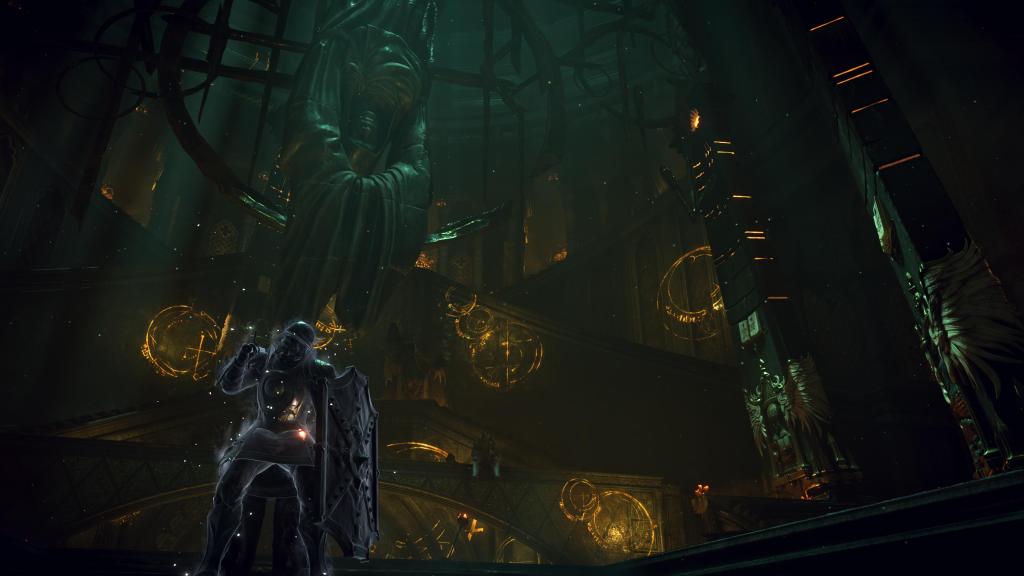
Even Astro’s Playroom and Marvel’s Spider-Man: Miles Morales offer a glimpse at what the PS5 can do despite the latter being a cross-gen game and the former being a pack-in title:
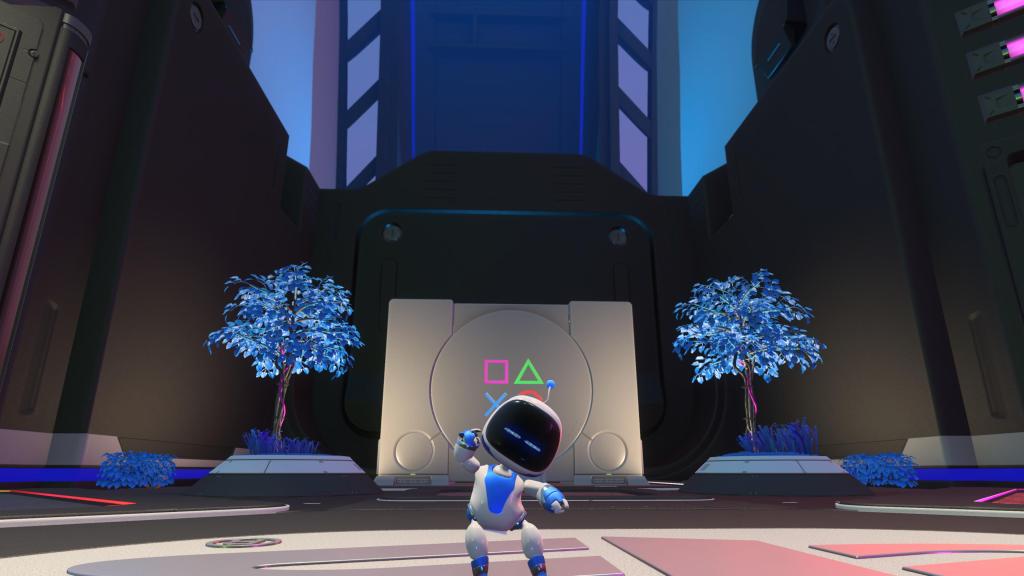

The bottom line is that the PS5 has more than enough power to keep up with a somewhat homogenized third-party game market while its architecture will lead to jaw-dropping exclusives that will likely look as good or better than the competition. It’s going to be a while before the PS5 starts to feel outdated.
PS5 DualSense Controller
As we’ve covered in our history of PlayStation controllers, the evolution of the DualShock line has largely been focused on improving what was already a solid design. When Sony announced that the PS5’s controller would feature a new name and design, I wondered if the company would really be able to build on the DualShock’s solid foundation and turn it into something new. Thankfully, that’s exactly what happened. In fact, let me end the suspense by telling you that my time with the PS5 DualSense has left me with the impression that this is the best controller Sony has ever made.
It starts with the feel. PlayStation controllers have typically felt good in your hands, but the PS5 raises Sony’s standards through a series of subtle changes. For instance, the slope of the R2/L2 triggers feels much more natural than it did on the PS4 controller while the DualSense’s grips aren’t quite as “stubby” as those on its predecessor. There’s also a noticeable (and welcome) additional heft to the DualSense controller which helps it feel much sturdier than what we had before.
When you’re talking about the exceptional design of the DualSense, though, it’s really all about the console’s haptic feedback and adaptive triggers. I’d heard the good word about PlayStation 5’s advanced rumble features, but feeling really is believing in this instance. Not only is the DualSense capable of producing powerful vibrations the likes of which I’ve never felt from a controller, but it utilizes feedback in a way that consoles like the Nintendo Switch have promised but rarely delivered. The controller really is capable of registering situation feedback that accounts for whatever is happening on screen.
In Demon’s Souls, that meant feeling the left side of my controller vibrate when a dragon roared by my’s character’s left. In Astro’s Playroom, it meant being able to tell what kind of surface I was walking on based solely on the feedback I received from the controllers. Meanwhile, the DualSense’s adaptive triggers enhanced the already great feeling of swinging around the city in Spider-Man: Miles Morales by varying the tension slightly based on where I was in a swing and other environmental factors. Games quite literally just feel different on the PS5.
Of course, the important thing to keep in mind about haptic feedback and adaptive triggers is that their value in the long term is going to depend on how developers choose to utilize these features. That potential for variance is already clear when comparing how those functions work in a game like Astro’s Playroom, which was designed to showcase the PS5’s features, to even a first-party title like Miles Morales. I believe both of these features are substantial enough for developers to commit to in the long-term, but we’ll have to wait and see.
I have similar concerns about the DualSense’s touchpad and microphone. The DualSenes’s touchpad feels much more responsive than the DualShock 4’s, but I’ve yet to see developers use it for anything more exciting than some menu shortcuts. As for the microphone, it’s nice in a jam if you don’t have a headset handy, but it’s hardly a long-term solution to that problem, and it seems studios are still trying to discover the most interesting ways to use it as a feedback device.
Ultimately, it’s a good thing that we’re talking about a controller so advanced that it’s going to force developers to change how they look at game design.
PS5 Home Screen UI
The best kind of console UI is the kind you don’t have to think about all that much. For the most part, the PS5’s home screen UI fulfills its obligations in that respect, but a couple of shortcomings are already apparent.
Let’s start with the good. The PS5 utilizes a somewhat minimalist UI. It attempts to consolidate as much information as possible into a row of icons located on top of the screen. When you select an icon, more information related to your chosen app is moved to the bottom of the screen. If you owned a PS4, you’ll find that this part of the UI functions about the same as it did before.
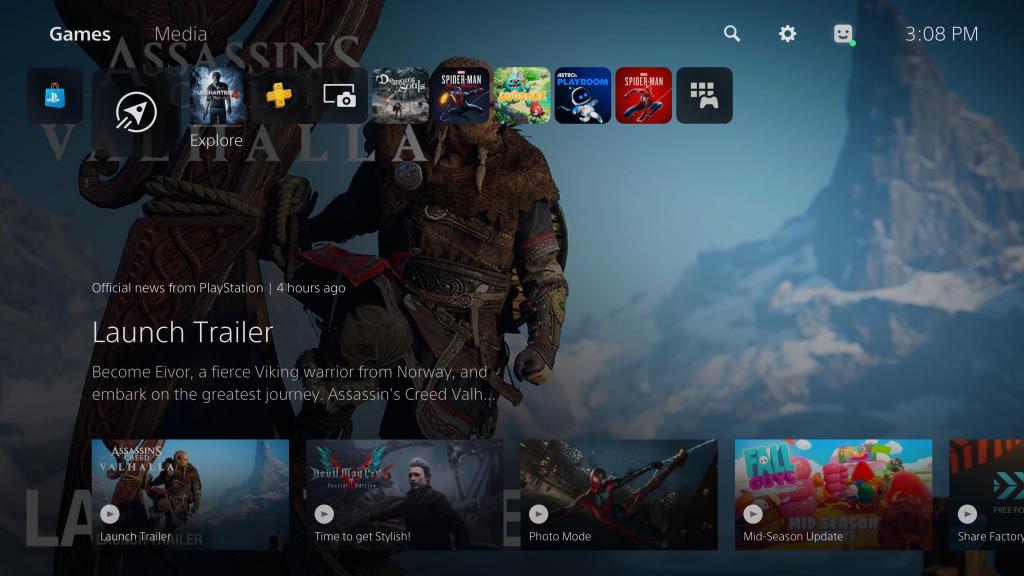
But even here, the PS5 UI introduces some wonderful little changes that streamline an already efficient experience. For instance, your media and game apps now have a screen of their own, which is quite handy when you want to be able to quickly access either. The PlayStation Store is also seamlessly integrated into the home screen this time around, so you’ll be able to hop in and out of it with ease. Again, the ways you’ll navigate through the PS5’s interface on a day-to-day basis are feel smooth and intuitive.
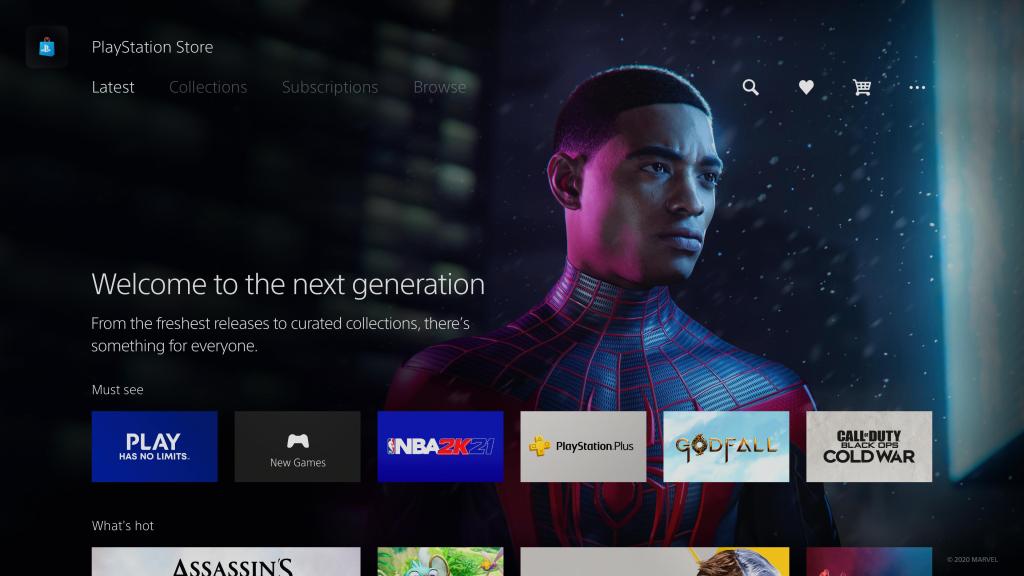
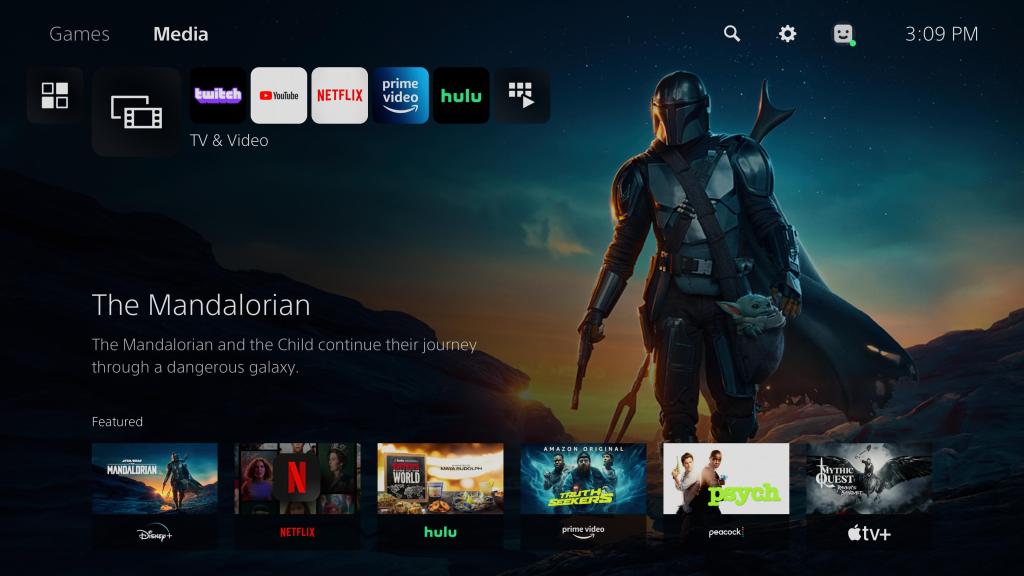
It’s when you dive into the advanced settings that some problems start to emerge. The PS5 offers a lot of ways to tweak your experience (including, but certainly not limited to, setting performance presets, managing automated recording, monitoring your storage, and altering the strength of the DualSense’s effects), but many of those features are grouped together in a generic “Settings” area which lacks the design fluidity of the home screen. I still find myself pausing when I need to navigate the console’s advanced settings as I consider the various categories on the left and try to remember which houses the option that I’m looking for. It’s not a big deal, but given how clean the home screen UI is, it would have been nice to see a more user-friendly version of the Settings area.
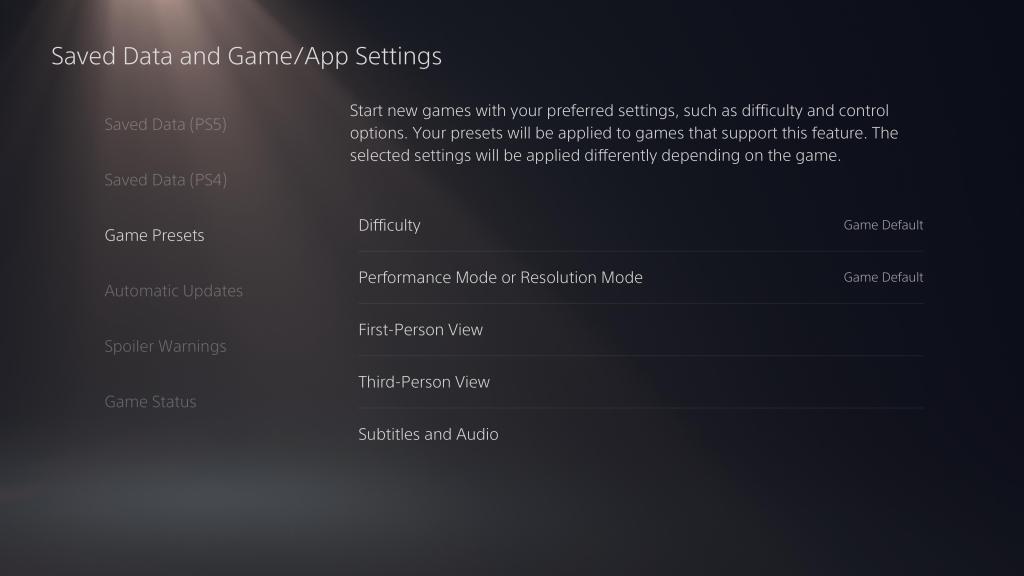
You may have also heard reports of people accidentally installing and running the previous-gen version of a game, which it turns out is actually an easy mistake to make due to how the PlayStation UI can sometimes struggle to relay a glut of text-based information on-screen.
Generally, I find that I prefer the clean layout of the PS5’s home screen to the more cluttered home screen of the Xbox Series X, but the more you ask of it in terms of settings and advanced features, the more you start to notice some of the seams.
PS5 Control Center
While the PS5’s home screen is largely a remodel of the PS4’s UI, the PS5’s Control Center will change the way that you interact with your console while you’re in a game.
In case you missed Sony’s extensive breakdown of this aspect of the PS5, the Control Center is what you’ll see when you press the PlayStation button in a game. Previously, pressing the PlayStation button in a PS4 game would just take you to the PS4’s home screen.
The Control Center offers so much more than a shortcut to the PS5’s home screen options. In it, you’ll be able to join a friend’s game or access help videos and cards which do everything from tell you more about the current level you’re playing to what activities you have yet to complete.
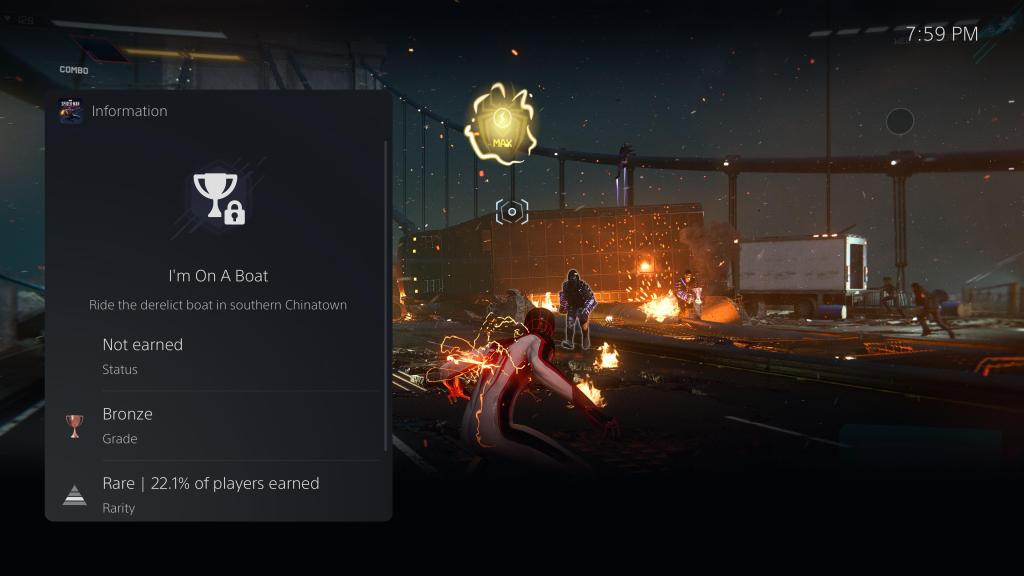
Speaking of videos, the Control Center works well with the PS5’s new Create button. Essentially a replacement for the PS5’s Share button, the Create button lets you do everything from snap a screenshot to tell the PlayStation whether or not you’d like to automatically record gameplay clips of a certain length. It’s a remarkably diverse improvement made that much better by the ways that the Control Center allows you to manage your photos and videos without ever leaving the game itself.
From a sheer quality of life perspective, the Control Center’s best feature is the way that it allows you to access more information without needing to exit your game. Along those same lines, it’s nice that putting the PS5 in rest mode while running a game will bring you back to the Control Center so that you can jump straight back into the action.
Of course, that last note does bring us to the issue of PlayStation 5’s “Quick Resume.” While you can switch between PlayStation 5 games without going back to the home screen (thanks to a “Switcher” option that appears when you press the PlayStation button), there’s no way to instantly pick up where you left off as on Xbox Series X/S. Quick Resume really is one of the best quality of life features for next-gen consoles so far, and I’m interested to see whether Sony is able to (or interested in) offering similar functionality at a later date.
As for the Control Center’s more advanced options, their appeal varies based on your preferences and whatever game you’re playing. Here again, Astro’s Playroom is the best way to explore the potential of these features as its Control Center offers a variety of cards that offer everything from information on hidden objectives to accurate breakdowns of how much time remains in a given level. Even Demon’s Souls clearly lays out some excellent challenges that offer new ways to play the game for those who seek out such things.
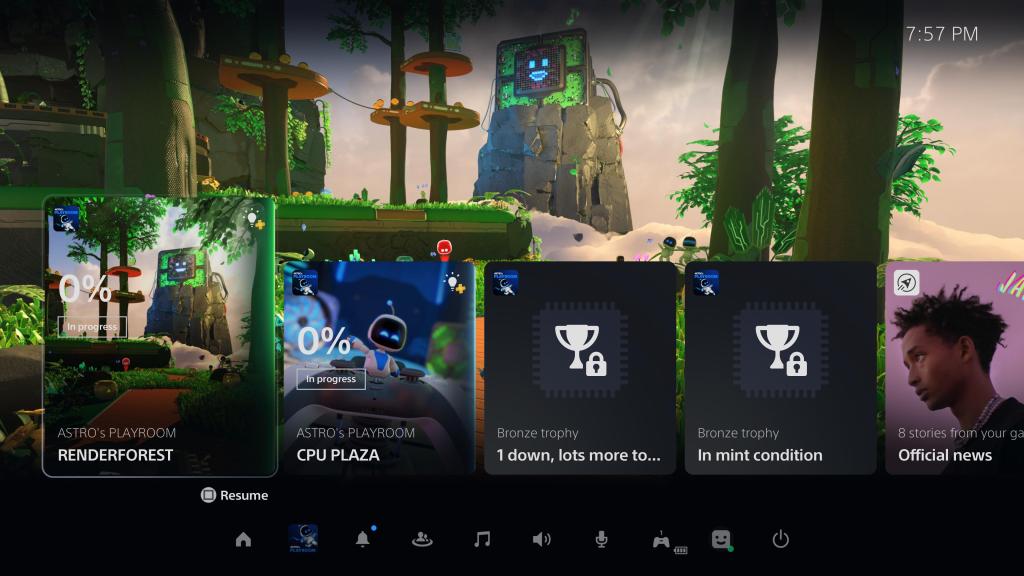
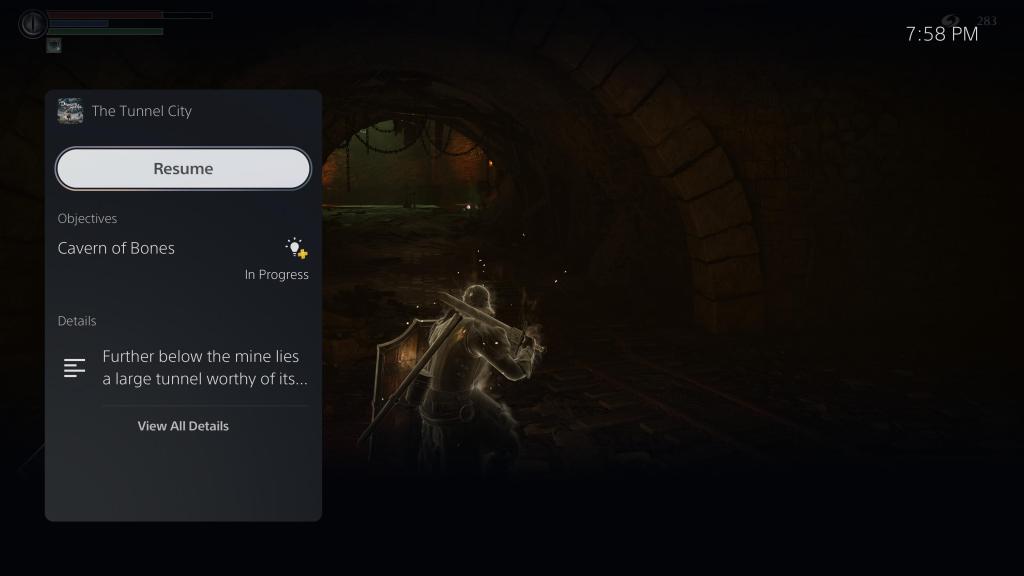
That’s kind of the theme of the Control Center. Obviously, its usefulness will depend on how developers utilize it, but its value will also be based on what you want from it. The good news is that, even if you’re not someone who is looking for in-game help or more information about achievements, you’ll still be able to take advantage of the expedited UI options that the Control Center offers as well as the potential growth of its multimedia features, such as a picture-in-picture mode and instant Spotify access.
Read more
PS5 Backward Compatibility
When it comes to backward compatibility, the story of the PS5 boils down to quality vs. quantity. The fact of the matter is that the PS5’s backward compatibility program isn’t nearly as extensive as the one featured in the Xbox Series X/S. The Xbox Series X/S supports four generations of Xbox software and the PS5 is only natively backward compatible with PS4 games. Simple math puts Sony at a disadvantage.
Is it disappointing that the PS5 doesn’t support PS, PS2, and PS3 games? Actually, it kind of is. PlayStation consoles have featured some of the best games ever made, and too many of them remain inaccessible outside of owning retro hardware/software. The logistical hurdles to offering that level of backward compatibility support are real, but that doesn’t make it any less disappointing that the PS5 isn’t simply the only PlayStation you’ll need.
Having said that, the backward compatibility you do get with the PS5 is mostly exceptional. While not every PS4 game has been optimized for PS5, every PS4 game does benefit from the PS5’s faster loading times, enhanced resolution options, and processing power. If you do find a PS4 game that has been properly optimized for PS5 (such as God of War), then you’ll marvel at how the console rejuvenates some of that console’s greatest titles with 4K/60 FPS gameplay. It’s important to remember that you can also upgrade select PS4 titles to their optimized PS5 versions at no extra cost.
I have heard Sony’s warnings that some PS4 games may not run as well as others on PS5, but I haven’t encountered a game whose performance noticeably suffers on the next-gen console. I suspect such problems may be limited to smaller titles, but I’m curious to hear more about this potential problem once more users have tested a wider variety of PS4 games.
Accessing those PS4 games can be done by purchasing them outright on the PlayStation store, diving into the greatest hits offerings featured in the PlayStation Plus Collection, or by simply transferring your PS4 games to the PS5 (or inserting a PS4 disc if your PS5 has a disc drive).
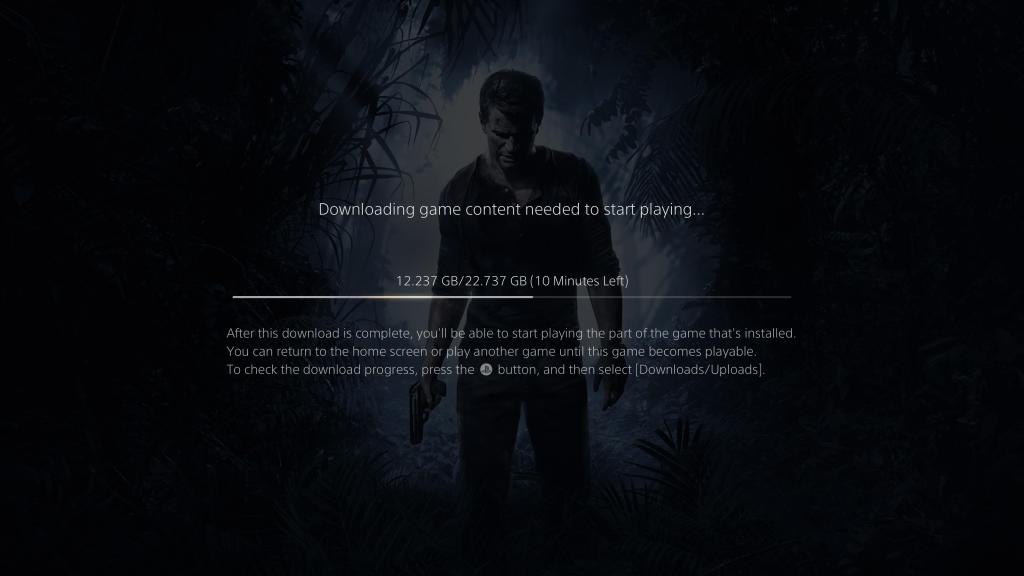
The transfer process works well enough if you’re transferring PS4 games over wi-fi (as I did), but I have heard reports of issues from users who tried to transfer games via a hard drive or ethernet cable. That could be related to separate reported issues with the console’s rear ports, but the general transfer process seems to work well, even if transfers over wi-fi are sometimes quite slow.
There are ultimately few reasons why I’ll need to keep my PS4 around now that I own a PS5 unless I want to play P.T. or…umm…Joe’s Diner.
PS5 Launch Games
I’ve heard some people say that the PS5’s launch lineup is the best in the history of game consoles. I’m not ready to commit to such a bold statement yet, especially given what I feel is a lack of a true system seller next-gen exclusive, but you’re certainly not going to be watching your console gather dust from a lack of games to play.
One of the biggest surprises of the PS5 lineup so far has been Astro’s Playroom. It may come pre-installed on your PS5, but it’s a great little 3D platformer with a ton of PlayStation easter eggs and the best playable examples of the PS5’s unique features.
Demon’s Souls is obviously the PS5’s most technically impressive game, and Miles Morales offers enough next-gen benefits to consider it a “soft” next-gen exclusive (even though it is also available on PS4). Godfall, Sackboy: A Big Adventure, and Bugsnax are also all fine, even if none of them quite live up to the highest expectations.
Outside of that, you’ll rely on a list of third-party games optimized for the PS5, but that’s hardly a bad thing considering that list includes titles like Assassin’s Creed Valhalla, Call of Duty: Black Ops Cold War, and Mortal Kombat 11 Ultimate.
The PlayStation 5’s early next-gen line-up feels stronger overall than the Xbox Series X’s and even includes a solid GOTY candidate in Demon’s Souls. The considerable trade-off, of course, is that the PS5 doesn’t really have its own version of Game Pass outside of the PlayStation Now program, which just can’t compete in terms of both selection and functionality.
My strong suspicion is that PlayStation will make a move to turn PlayStation Now into a true Game Pass rival sometime during this generation. After all, the rapidly approaching age of the $70 game is going to make it that much more difficult for many gamers to play all the great titles Sony surely intends to produce for the PS5.
PS5 SSD
Discussions concerning the PS5’s SSD should come down to what the SSD will do for you now versus what it may do for you in the future.
In the short term, the PS5’s SSD offers the main thing most people are looking for in an SSD: faster load times. The PS5’s SSD is so fast that you won’t even be able to enjoy the hilarious subway train fast travel sequences in Marvel’s Spider-Man because they no longer exist. Next-gen games like Demon’s Souls obviously benefit the most from the SSD’s power, but even titles that haven’t been optimized for the PS5 benefit from lightning fast load times or no load times at all.
There’s no going back once you’ve used the PS5’s SSD, but it remains to be seen how it will be used in the future. We’ve spoken before about what makes the PS5’s SSD unique, but the fact is that we’re not going to see what this thing is really capable of until we start seeing more proper next-gen games designed specifically for it.
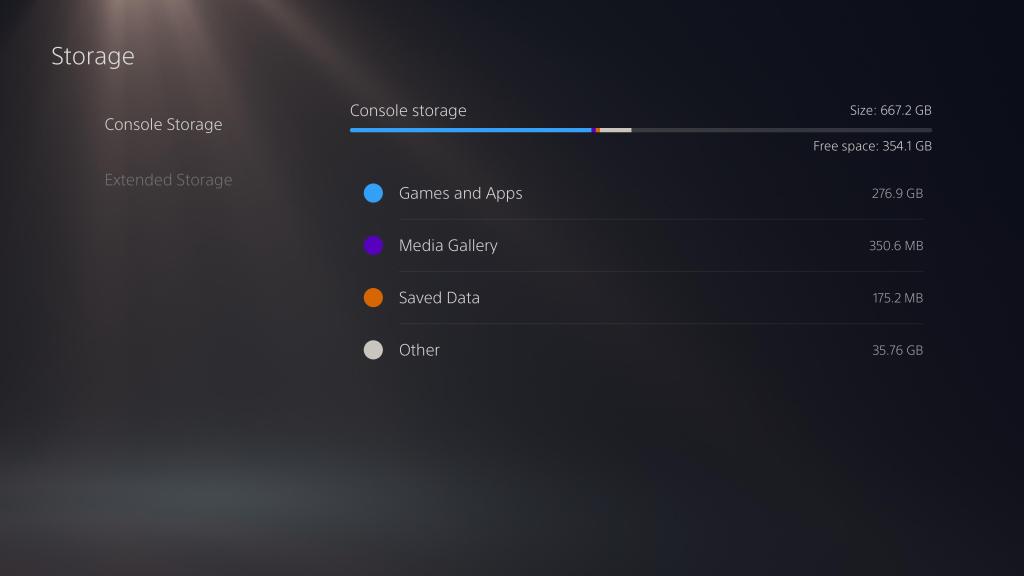
So while it’s a little annoying that the PS5’s SSD is smaller than the one in the Xbox Series X (especially since you can’t currently store PS5 games on an external drive), I do remain confident that the difference will be worth it once the PlayStation Studios teams start exploring what this thing is really capable of.
PS5 Console Design
Look, the PlayStation 5 is a chonker, and there’s really no getting around that fact.
The size of the console is borderline absurd, and it’s made slightly more annoying by the fact that you need to adjust a stand to safely store the console vertically or horizontally. If you’re planning on keeping this thing in a small entertainment center or anything with cubby holes, you’re going to have to get creative.
But…I kind of love the PS5’s design. It’s a bold-looking console that immediately captures your attention with its sheer size, sleek curves, and nice color palette. It casts a large shadow over my nearby Xbox Series X, and I don’t just mean the literal kind generated by its nearly villainous proportions.
While I was not able to perform an extensive heat test on the PS5, I can tell you that a simple hand wave by the console’s fans after a long gameplay session suggests that the PS5 runs much cooler than the PS4.
Formal heat tests tell a similar tale (and Sony’s engineers explained that the console’s size can partially be attributed to its extensive cooling system) so it seems that the PS5 doesn’t suffer from any notable heating problems straight out of the gate. We’ll see whether wear, tear, and time reveal something different.
The PS4 and PS4 Pro suffered from serious noise problems, so it’s hardly a surprise that Sony felt it needed to address that issue with the PS5’s design. What is a bit surprising is the results of their efforts. The PS5 generates almost no noticeable noise, even after lengthy gameplay sessions. I tried putting this thing through its paces as best as I was safely able to, and I just couldn’t get the fan to generate a significant amount of noise.
Again, we’ll see if the PS5 stays quiet after a few years of use, but everything seems to be working as intended in the early going.
PS5 Technical Issues
We’ve spoken about some of the PS5’s known issues, but the gist of the story is that the console does suffer from some early technical problems, many of which seem to be related to its rear ports.
Based on my own experience and existing user reports, though, it seems that the PS5 is a mostly stable system. It will crash on you from time to time, it is apparently possible to get a broken console, and there are some glitches that will need to be resolved in the short term.
However, the same is true of nearly every device. Nothing I’ve seen thus far suggests that you’ll need to worry about any significant short-term issues at this time.
The Little Things
Here are some other observations about the PS5 that I just couldn’t quite fit into any of the sections above:
- I love that you can now see how many hours you’ve played games via your PlayStation profile, even if I’m hesitant to know the answers to such questions.
- The PS5 allows you to set a universal difficulty level and graphics settings (Performance or Resolution) from the console’s menu. I suspect that you may still want to change this on a case-by-case basis, but the option is more than welcome.
- You can actually customize exactly what the PS5’s Create button does, which is fantastic if you’re someone who loves to constantly capture clips and photos. But you may prefer to dynamically adjust these settings based on your needs.
- You can actually turn spoilers “off” in the PS5 settings, which should prevent them from appearing in shared media and tips. I say “should” because the extent of this feature hasn’t really been tested, and your definition of what constitutes a spoiler may vary.
- Wi-fi download speeds on the PS5 feel better overall, but if you have to download a larger file, you’re still going to want to use an ethernet cable.
- The PS5 setup process is remarkably easy, with the only real hitches coming if you want to transfer PS4 games to PS5 right away. Even then, that just means the process will take a bit longer.
- It’s a little annoying that you can’t just hold down the PlayStation button and choose to shut down or restart the console right away. Granted, that option is only a couple of button presses away, but considering how much else of the PS5 is devoted to quality of life, this function feels more annoying than it needs to be.
- I did encounter a glitch with the PS5’s rest mode which resulted in my console improperly shutting down, but aside from the one-off occurrence, it seems to work well and is reportedly power efficient.
- I’m a little worried about the usefulness of the PS5’s recording options considering that the console’s internal SSD is relatively small. You’ll eventually have to rely on an external drive if you plan on capturing a lot of media on your PS5 while downloading a reasonable amount of games.
- I can’t say enough nice things about Astro’s Playroom. Not only does it show what the PS5 is capable of, but it’s an incredibly fun game in its own right that is more than worthy of a full-length follow-up.
The Verdict
Let’s be honest: rendering a PS5 verdict right now is, at best, premature. The value of a console fully reveals itself over time. Besides, it’s not like you’re able to easily buy a PS5 at the moment no matter how badly you want one.
Yet, the PS5’s early accomplishments are impressive. I never regretted owning a PS4, and the PS5 is (at the very least) poised to be a better PS4. It improves upon its predecessor’s biggest weaknesses while offering an array of new features.
More importantly, the PS5 already boasts a library of games that I find myself bouncing between. The PS4’s biggest strength was how its army of exclusives essentially forced you to own the console if you wanted to play the best that the previous generation of gaming had to offer, and with Demon’s Souls and Astro’s Playroom (as well as the best way to play Spider-Man: Miles Morales and other cross-gen games), the PS5 is already on its way to replicating that feat.
While I’m also head over heels about the Xbox Series X for Game Pass alone, the PS5 has honestly revived my love of console gaming with its smooth performance and a controller that makes every game feel more satisfying than it would be on any other platform.
What excites me most, though, is that we’re just getting started. Yes, some of the PS5’s best features are dependent on the contributions of the console’s developers, but the PS5 sets up developers for greatness in a way that goes far beyond its raw power. Even if we only see first-party studios tap into the PS5’s full potential, that means games from Naughty Dog, Santa Monica Studio, Insomniac, Sucker Punch, and Guerrilla that will feature expansive SSD-powered worlds, Control Center interactions, and gameplay moments only made possible by the DualSense controller.
Sony seems determined to carry on its “games first” philosophy from the PS4 while exploring the room a bit more in terms of a console’s multimedia potential and advanced features. Because of that, you’ll probably end up wanting a PS5 at some point, but don’t feel too bad if that’s not until 2021 at the earliest as we’re still months away from next-gen consoles truly becoming the industry standard.


